National labs offer options for science careers
In a world that asks scientific trainees whether they plan to seek a job in academia or industry, not many consider a research career independent of either sector. In a national laboratory, for instance.
The national laboratory system employs more than 20,000 scientists and engineers in 17 laboratories across the country. The system, primarily funded by the Department of Defense and the Department of Energy, grew from the Manhattan Project and the early days of the Cold War, when concentrating the nation’s nuclear expertise was a high priority. While several laboratories continue to focus on maintaining the country’s nuclear weapons stockpile, the system’s mission has evolved since the 1940s.
Nowadays, researchers at national laboratories conduct basic research in microbiology, genomics, crystallography and other biochemical fields in addition to physics, materials science and engineering. They also provide equipment and support at scientific core facilities to over 30,000 visiting scientists per year.
ASBMB Today writer Laurel Oldach spoke to two Ph.D. scientists who work at national laboratories about how they landed where they are and what working in the national laboratory system is like. The interviews have been edited for style, length and clarity.
Tom Metz: 100 percent research, all the time
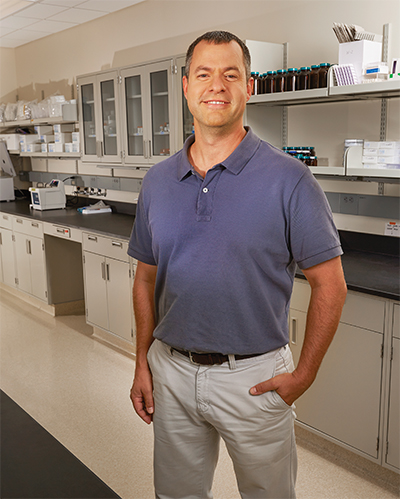 Tom Metz, the metabolomics team leader of a research group at Pacific Northwest National Laboratory, says his work provides endless possibilities.Courtesy of Pacific Northwest National Laboratory
Tom Metz, the metabolomics team leader of a research group at Pacific Northwest National Laboratory, says his work provides endless possibilities.Courtesy of Pacific Northwest National Laboratory
Tom Metz, the metabolomics team lead of a research group at Pacific Northwest National Laboratory in eastern Washington, has a prolific publication record. The 100-plus journal articles on his CV include algorithm development, methods in multi-omics, viral pathogenesis and his first love, chronic disease.
“That’s one of the things that I like about working here,” Metz said. “Every year is a little bit different in terms of the projects that you get to work on. It’s very intellectually stimulating.”
Metz talked about how he came to lead the metabolomics team within the integrative -omics group at PNNL, a career path in research that may be unfamiliar to many scientists.
Let’s start with the basics. What do national labs do?
There are 17 national laboratories around the country, and they were set up to help with national priorities: energy, defense, things like that. Different laboratories do different things. Our group here at the Pacific Northwest National Laboratory does basic research on biomedical and environmental themes. For example, we study organisms that generate a lot of a particular material, whether it’s a lipid or fatty acid, that can be used for biofuel production or even commodity chemical production. We have a lot of studies now looking at the microbiome in human and mouse models of disease, trying to understand mechanisms and identify biomarkers; we have a number of projects looking at diabetes and cancer.
The capabilities that have been developed here for molecular measurement can pretty much be applied to anything that contains the molecules we specialize in. We have a really diverse research portfolio. Typically, we will pair up with external collaborators that have interesting biological questions, and then we work together to answer those driving science questions.
What is it like to work as a lead scientist at the PNNL? How does it compare to being, say, a professor at a university?
It’s 100 percent research, all the time. We do not train students as a primary objective. Of course, we have students come through here in different capacities. We have postbacs, post-master’s and postdoctoral research associates who will spend anywhere from one to four years here working on a project. But that training isn’t our primary goal.
How did you first get interested in science?
My mom was a nurse in surgery, and I was fascinated by the stories she would tell when she would come back from different cases. I first thought I wanted to do disease research; at the time, I thought I needed a medical degree to do that. I applied to medical school and didn’t get in. My organic chemistry professor talked me into going back to the same school to start a bachelor’s in chemistry.
One thing led to another, and I ended up in graduate school. I still wanted to do disease research, and I ended up going to University of South Carolina for my Ph.D. with John Baynes. He was studying diabetes, focusing on proposed chemical mechanisms for why certain individuals with diabetes develop diabetic complications. That was really cool to me, because it coupled chemistry with disease research.
After I finished my Ph.D., I asked him, if I wanted to do a postdoctoral appointment in mass spectrometry, where should I go? He suggested Jack Henion at Cornell or Dick Smith at the PNNL. That year, Jack Henion had just retired, and he was starting up a new company. I felt, with a startup company, there were probably not a whole lot of opportunities for research.
Then I came out here (to Richland, Washington) and interviewed at the PNNL. I met Dick Smith and a lot of the people in the group at the time and got to see all of the great instrument development that was going on. They gave me what I still call the “shock-and-awe tour” of all the instrument labs. I felt like a kid in a candy store, and I knew that this was where I wanted to do my postdoc appointment.
A few months into that appointment, two calls for proposals came out looking for advanced proteomics and metabolomics technologies applied to diabetes. Having just done a Ph.D. in that area, I wrote those grants. I couldn’t be the PI on paper because I was a postdoc, but they were both funded. Because I was pretty good at writing grants, Dick suggested that I stay here as a staff member.
It seems like you still get plenty of opportunities to dig into mechanisms of diseases like diabetes.
Sure. It really depends on what we can get funding to do. It almost seems like the possibilities are endless, because we have such a solid reputation and track record in instrument development and technology development — not only hardware but also software — and application of both of those to systems biology studies. So we really have a lot of good opportunities to continue doing that.
Any advice for students and trainees who might be interested in a research career similar to yours?
I think they should think about what they really want to do and find the right opportunities for their career objectives or their scientific passions. Often, I think, there’s a little bit of a mismatch in what people end up doing, say, for a postdoctoral appointment and what they would really like to do.
Mollie Rappé: On the lookout for scientific stories
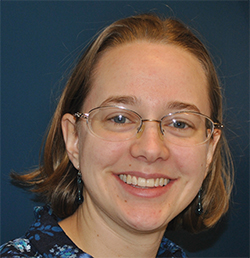 Mollie Rappé, shown here when she was in graduate school, originally planned on a research career but is now a science writer at a national laboratory in New Mexico. Courtesy of Mollie Rappé
Mollie Rappé, shown here when she was in graduate school, originally planned on a research career but is now a science writer at a national laboratory in New Mexico. Courtesy of Mollie Rappé
Mollie Rappé spent three months as a science writing intern at the American Society for Biochemistry and Molecular Biology in 2015 while earning her Ph.D. in biophysics. After graduating, she took a job as a science writer at Sandia National Laboratories in Albuquerque, New Mexico. ASBMB Today caught up with Rappé to talk about her pursuit of a career in science communication.
“As a science writer, I get to go in and talk to the researchers about their work. Whether they’ve been working on ways to decontaminate anthrax for the past 15 years or a new meta material that can do cool new things for the last 18 months, I get to learn all about it,” she said.
Since we spoke, Rappé has accepted a new job as a science writer at Brown University. “I’m looking forward to getting back to my biophysical roots,” she wrote in an email.
How did you first realize you were interested in science?
I’ve been interested in science pretty much my whole life. My mom likes to tell stories about how “rock” was my fourth word and how I used to go around when we were on walks and stuff, picking up pretty pebbles and putting them in my diapers. As I got older, my interest moved from rocks to bugs to biology in general, so I went into biochemistry in college and biophysics for grad school.
What did you work on in grad school?
At Johns Hopkins I studied ribosome biogenesis, how the factory of the cell puts itself together, specifically the bacterial 30S ribosome. There were some rRNA mutations that I made to attempt to perturb assembly, and it pretty much destroyed assembly. The mutant ribosomes were fatal if they were homogeneous in the bacteria, so I had to do some workarounds to get a mixed population of normal, functional ribosomes and these mutant ribosomes. Then, how do you purify the mutant ribosomes to see what stage of assembly they were actually paused at? That was pretty much six years of work.
You interned at ASBMB Today as a graduate student. Were you writing on the side throughout grad school, or was the internship your major writing experience?
I had written fiction on my own since elementary school, but it wasn’t until my fourth year of graduate school that I realized that I didn’t like doing research. I didn’t like the constant failure of experiments and spending a week figuring out, “Oh, the reason why it failed is because a lab mate destroyed an enzyme” — that sort of thing.
The American Association for the Advancement of Science has a test to compare what you’re good at and what you enjoy doing with “alternative careers,” and that’s when I discovered that science writing was actually a real career, and that opened up my eyes. I found the internship with the ASBMB and persuaded my Ph.D. adviser to let me take a leave of absence to do the internship. I’m just glad the ASBMB was flexible, because it took a while to convince her.
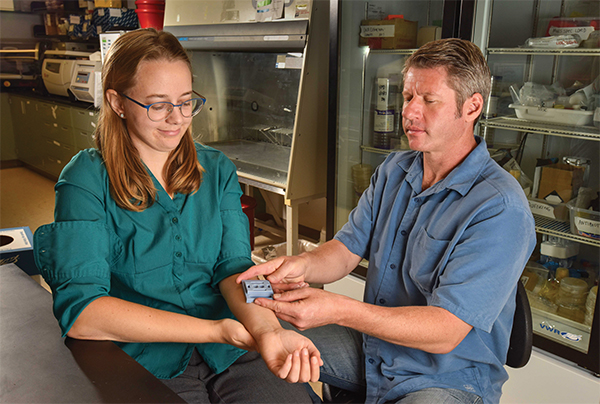 To report on a story about a new medical device that combined microneedle and microfluidic technologies to measure subcutaneous electrolytes, Mollie Rappé signed herself up for a clinical trial.Courtesy of Randy Montoya/Sandia National Laboratories
To report on a story about a new medical device that combined microneedle and microfluidic technologies to measure subcutaneous electrolytes, Mollie Rappé signed herself up for a clinical trial.Courtesy of Randy Montoya/Sandia National Laboratories
We talk a lot these days about ‘alternative careers’ for people with Ph.D.s Did you experience any friction when you decided to leave the bench after grad school?
Most of my thesis committee were quite disappointed. I got a lot of talking-to from other women scientists about how dare I “lean out” and leave the bench, so yeah, there was a lot of friction. I think by that point my Ph.D. adviser had basically written me off. If it weren’t for one of my committee members stepping up and basically saying, “Guys, why don’t you get your heads out of your butts?” then my thesis defense probably would have been a lot more painful.
That sounds really difficult.
It’s ridiculous. It’s like, can’t you look at the statistics? Just because you chose one path doesn’t mean that it’s the one true path. But, at least in my experience, to most of the professors I come across, becoming a professor at a research institution is the one true path and anything off of that — at best, it’s second-best. A lot of them told me that it was a waste that I was leaving.
How did you become aware of the national lab system? How did you find the job at Sandia?
During my thesis work, I had gone to Brookhaven National Lab every quarter to do experiments at the synchrotron there, and my father had some involvement with the National Renewable Energy Laboratory. So I knew of them.
After I finished my internship at the ASBMB and went back to write up my thesis, I applied to anything and everything in the general area of science communication. From being a barely paid social media intern for the Planetary Society in California to writing for a chemical goods company, to universities, to national labs, I applied everywhere. I love it at Sandia, and I’m really glad that they took a risk on someone who only had three months of science writing experience.
Wait, can I pause you and ask about how you use a synchrotron for ribosome assembly assays?
This is not a common use for a synchrotron. X-ray crystallography is the primary use. But you can use X-rays that were generated by the synchrotron to irradiate frozen bacterial cells. The water frozen in ice — a special kind of ice — forms hydroxy radicals, which are highly reactive and cut everything up. The hydroxy radicals from this bright X-ray have a very short lifetime, so they really only cut the part of the ribosome that is solvent exposed. By doing some primer extension and back-calculation, we see where these cleavages occurred. Then you can compare wild-type ribosomes to mutant ribosomes to see the places that are different and thus, presumably, unfolded — whether it’s a protein that’s not there or an entire domain of the ribosome just sort of flopping around because certain key helices haven’t been formed yet. There’s one footprinting beam line at Brookhaven National Lab and another at Lawrence Berkeley National Lab; those are really the only two.
You seem to write about lots of different types of science at Sandia. How do you find leads?
I have several different ways I find stories. We have laboratory-directed research and development funds, which are funded as part of program overhead, and then the scientists there write proposals — say, “I want to develop a microfluidic system that can hook up to microneedles and detect electrolyte levels.” That may someday be used for the military, but it’s basic science. Proposals like that one are a really good source of stories for me.
Of course, we are on the lookout for scientific papers that are coming out. We talk to managers to ask what sort of cool research is going on and what’s about to be published to get on top of things and write about that.
Any advice for people who are in the lab now and might be interested in doing something similar to what you do?
Out of all of the people that I’ve met at science writing conferences and scientific conferences who’ve made this switch, I haven’t met anyone who regrets it. If you’re in the lab and you love what you do and you love incremental learning about a very narrow area, then of course stay in. But there are other options, and you shouldn’t let naysayers get to you.
Enjoy reading ASBMB Today?
Become a member to receive the print edition four times a year and the digital edition monthly.
Learn moreFeatured jobs
from the ASBMB career center
Get the latest from ASBMB Today
Enter your email address, and we’ll send you a weekly email with recent articles, interviews and more.
Latest in Careers
Careers highlights or most popular articles

Make your abstract stand out
Ensure your research is impossible to overlook. Get quick, practical reminders for crafting an abstract that attracts readers and helps you build connections at the conference.

Inside industry postdocs
As more Ph.D. scientists look beyond academia, industry postdocs offer a new kind of training, where mentorship meets mission-driven research. Fellows at Pfizer and Genentech share how these programs prepare them to translate discovery into impact.
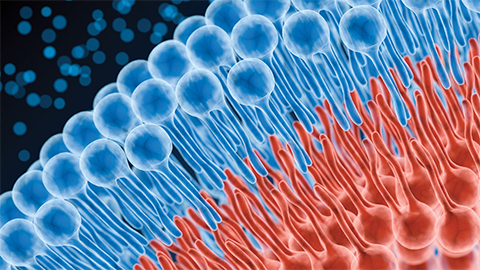
Upcoming opportunities
The Lipid Research Division Seminar Series returns Oct. 15 with talks on recent advances in triglyceride cycling in adipocytes.

Writing with AI turns chaos into clarity
Associate professor shares how generative AI, used as a creative whiteboard, helps scientists refine ideas, structure complexity and sharpen clarity — transforming the messy process of discovery into compelling science writing.
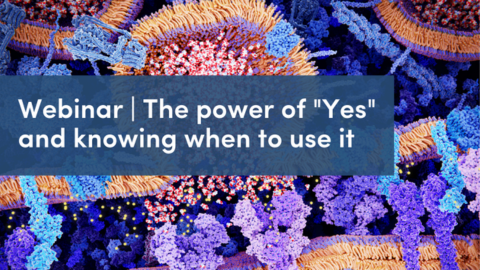
Upcoming opportunities
Register for the free ASBMB webinar on the power of "Yes" and knowing when to use it, coming up on Sept. 30!
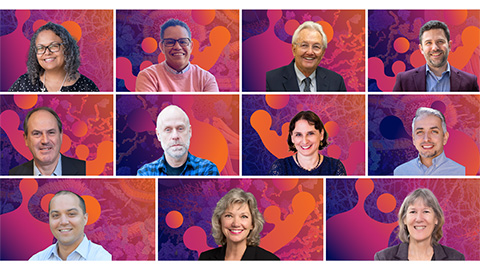
ASBMB names 2026 award winners
Check out their lectures at the annual meeting in March in the Washington, D.C., metro area.

